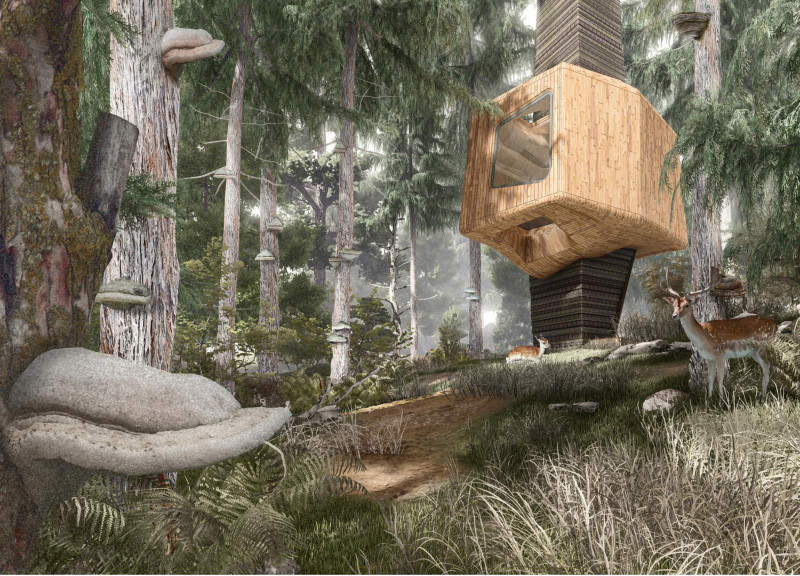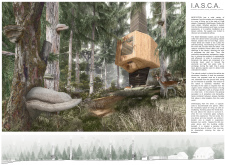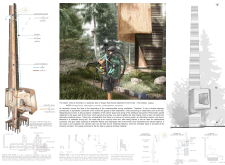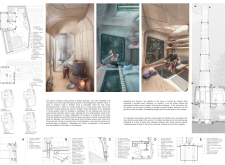5 key facts about this project
Unique Design Approaches and Conceptual Framework
What sets the I.A.S.C.A. project apart from conventional architecture is its strong emphasis on sustainability and natural integration. The architecture responds directly to its site by using local materials and methods that minimize environmental impact. Each cabin is constructed using lamellar wood and plywood panels, chosen for their structural strength and aesthetic quality. The use of toughened glass allows for ample natural light while providing views of the surrounding landscape. Furthermore, the project's reliance on renewable energy sources, such as photovoltaic panels and rainwater collectors, illustrates an innovative commitment to ecological sustainability.
The vertical orientation of the cabins reflects an intention to not only connect with the forest canopy but also to elevate the user experience, creating a strong sense of place. This design choice enhances the atmosphere of tranquility sought in meditation while ensuring that each cabin maintains privacy. Natural ventilation strategies integrated into the design contribute to occupant comfort without relying heavily on mechanical systems.
Spatial Arrangement and Functional Design
The spatial organization of the I.A.S.C.A. project includes communal areas that encourage collective gatherings while also providing secluded spaces for individual retreats. The modular nature of the living areas allows for flexibility, adapting to different user needs for meditation, cooking, and relaxation. Each component of the design is meticulously crafted to ensure a balance between functionality and the meditative experience. For instance, the use of hemp fiber insulation promotes thermal efficiency, contributing to the overall sustainability goals of the project.
The unique structure, reminiscent of natural forms such as the amadou fungus, aims to express a dialogue with nature rather than impose upon it. This integration of design and environment enhances the calm experience of meditation, encouraging users to engage with the landscape, fostering a deeper connection to nature.
Explore the architectural plans, sections, and designs further for a comprehensive understanding of this project. The thoughtful execution of architectural ideas within the I.A.S.C.A. project highlights practical applications of sustainable design, and offers a detailed exploration of modern architectural practices infused with mindfulness principles.


























